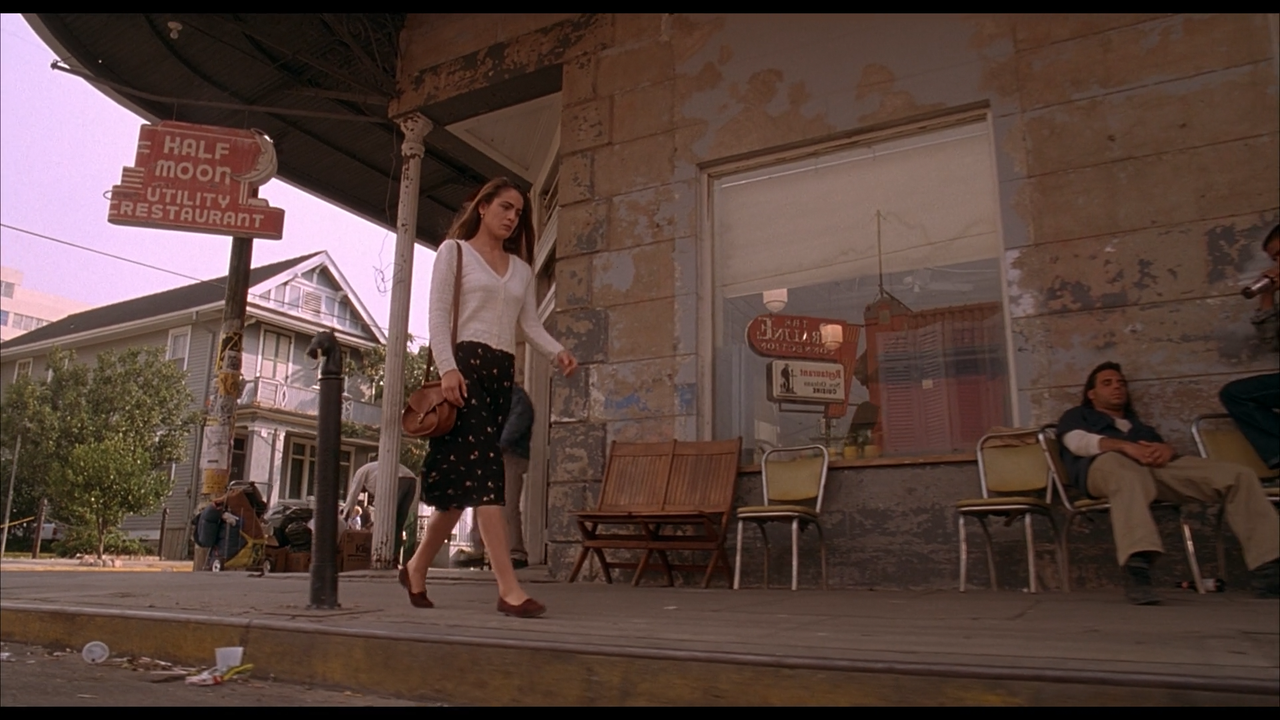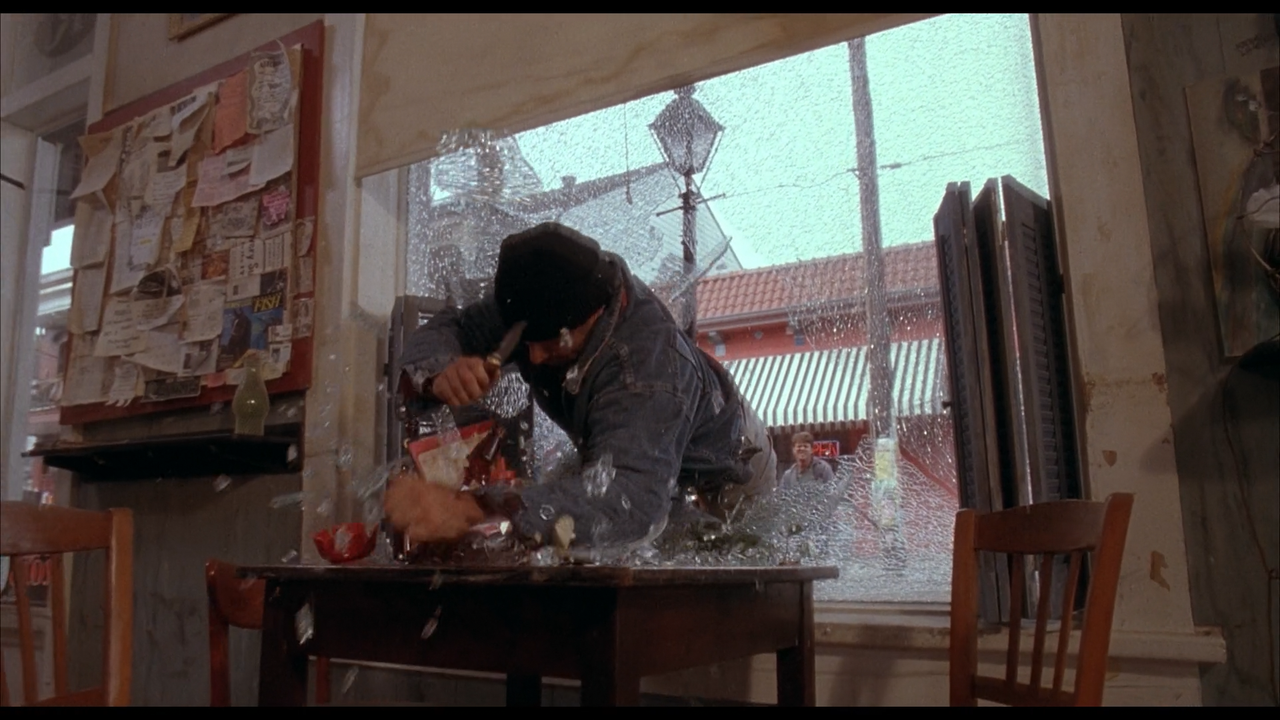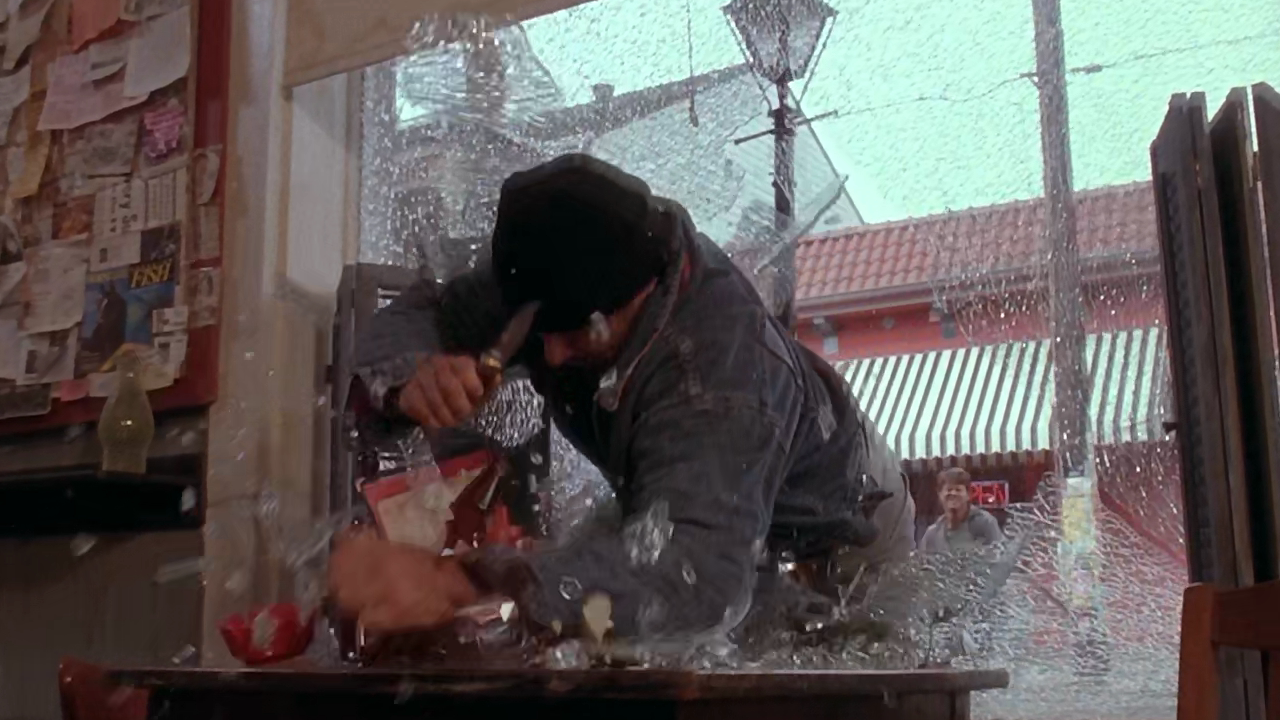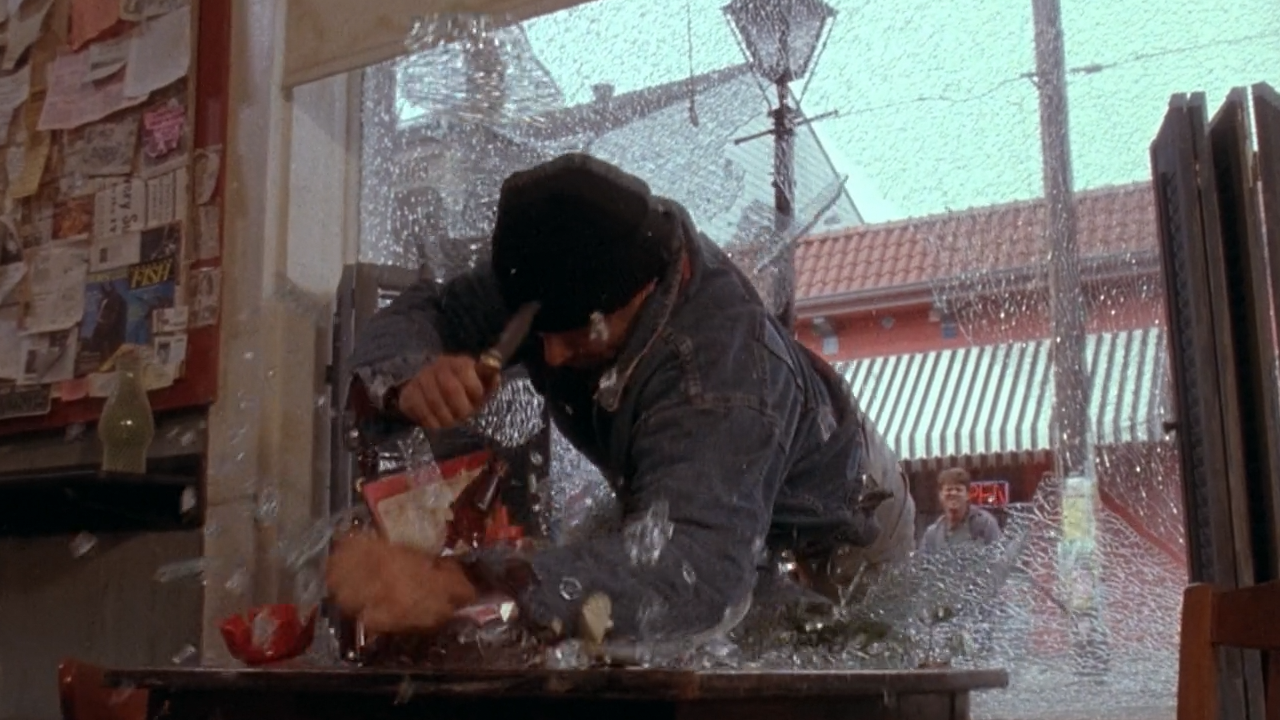I used the latest version of Staxrip, updated only some files manually.
Here is the sample file, I cut it out from blu-ray without re-encoding: 1080p@23.97 (600 Mbyte)
You can download it here (until a week) https://wsi.li/BEAWwFwfV7wQ
and you can repeat the test too.
REMEMBER: the file sharing service will delete automatically the files after 7days.
X265 2pass SLOW (factory settings) WAS achieved by NVENC h265 with this settings:
With the help of NVIDIA HW image enhancer (very very extra smart über quality HW accelerated sharpener)
ENCODED VIDEO FILES are located there:
X265 2pass SLOW video (88 Mbyte)
https://wsi.li/quEHu71ZWXCd
NVENC HEVC (88 Mbyte)
https://wsi.li/vzExMAa9kxib
NVENC HEVC STAXRIP settings:
THE MOST IMPORTANT SETTING of the enhancer:
It is shocking good!!!!!!
I used only my GPU for image enhancement process and compress, and I achieved the quality of the X265 2pass SLOW.
So a video card with clever settings can create very very very good quality.
Images: Please, download the pictures and enlarge them.
X265 2pass SLOW:
NVENC HEVC pictures

+ Reply to Thread
Results 1 to 30 of 38
-
Last edited by Comparison; 8th Jul 2018 at 17:18.
-
If you look more closely at the video samples, NVEnc drops too much detail (it blurs it all away) and produces too many posterization artifacts . It's definitely worse
Sharpening / edge enhancement is probably counterproductive for NVEnc at low bitrates -
I suggest to download the videos, and enlarge the captured snapshot pictures side by side by side.
Around 70 - 80% of the frames of the video, the NVENC is much closer to the quality of the original video source, around 20-30% the X265 is closer.
So I found the quality of the NVENC HW sharpened version much better in most frames than the X265.
That's because this test debunked the very well spreaded old stereotype/myth.Because , maybe nobody tried these exact settings in HW enhancer/sharpener of NVENC HEVC. The reactions are similar when an old faith myth is debunked. Many people don't like "the debunking reality" in the beginnings, until they will try it themselves.
Welcome to the reality!
Without sharpening, the natural NVENC HEVC is much worse and much dimmer than the older backwarder NVENC AVC!!!!Last edited by Comparison; 8th Jul 2018 at 16:25.
-
I did download them and you're clearly mistaken.
Instead of viewing side by side, interleave the videos. You can see how poorly NVEnc performs - it's missing all the fine HD details and textures, all the fine grain in the original. It's blurring everything away that makes it "HD quality". Adding a enhancer / sharpener actually makes it worse, more difficult for NVEnc to compress. It would be smarter to add that as a playback option
Not even close here.
This is another test that reaffirms how much better x265 is than NVEnc . Welcome to reality!
-
I really don't want to offend you, but I can only suggest you to go to an ophthalmologist. Just examine the inscriptions, letters of the text which appear in the video, examine the details of the human faces , and fine texture of the clothes of the people. In most frames the NVENC clearly beats the X265 2PASS SLOW video.
-
Not even close . It's the opposite. Clearly x265 retains more fine details and textures. NVEnc blurs everything away . NVEnc is clearly worse by far . It's not me that needs my eyes checked. Good luck convincing anyone...
Your screenshots aren't even of the same frame. You should learn how to do proper comparisons. Sorry, but clearly you are new at this. One way is interleaving in avisynth, or use something like avspmod to compare the same frames (load each video in different tabs and switch with number keys)
If you're comparing letters and text, you could sharpen x265 too before you encoding. Sharpening make it less like the original; it's a post processing subjective effect . Sharpening makes it more difficult to encode (requires higher bitrate to achieve a given level of quality). New people tend to oversharpen things, but it's conterproductive for compression, especially at lower bitrates
You will eventually learn, good luck with this -
I changed the sharpener:

Than try this newer version:
https://wsi.li/vzExMAa9kxib
If you can't find it better, than go to eye doctor.
Maybe a higher diopter can help?

Last edited by Comparison; 8th Jul 2018 at 17:28.
-
I'd have to agree with poisondeathray. The x265 encode retains more detail and has less posterization. And the NVEnc encode is over sharpened. Though the low bitrate is good for comparing, it's much lower than I would use for storing my videos.
I saw a problem with the x265 encoded video: The luma and chroma channels have dropped by about 1 unit, causing the picture to be a little darker and discolored. That might have been caused by the decoder I was using (ffVideoSource()) and its conversion from 10 bit to 8 bit. -
cpu beats every time hands down been there done that - just simple facts .... :/
-
In addition, this is the second thread to the same topic, the "definitve" conclusion about subjective opinions, and the lurid headline (clickbait style) and insulting comment does not make it appear objective.
_
The secret of optimal quality retention is taking efforts in not losing details at first. Once they are lost, their loss can only be camouflaged, but not repaired. GPU encoders are certainly handicapped in comparison with CPU encoders, due to a limited set of instructions (GPU instructions are not optimal for video encoding demands) and a smaller scope (especially temporal scope across a number of frames), possibly also a limited amount of available memory to store frame content to be compared. You will notice a severe limit of B frames and reference frames in GPU encoded results, both of which are the main advantage factors in modern efficient video encoding.
"Sharpness" is always an attribute of the original material. It can only be decreased by a blurring process (starting with frequency dependent quantization). Applying a filter with such a name does not restore original sharpness, instead it adds artificial contrasts and ringing artifacts (see Gibbs phenomenon). Any objective metric comparing original and copy will identify this as a difference, and differences are defined as "quality loss", regarding objective metrics. Subjective impressions may vary, though, depending on personal preferences. -
Wrong. You confused the grain with details. The X265 video has less visible useful details than NVENC, but it has more grain than NVENC. (Is this a real grain or just bad compression of x265?) Human eye don't see grain on natural objects, grain is just a film industry art. The fine details of X265 are dim everywhere.
Last edited by Comparison; 9th Jul 2018 at 06:07.
-
Marketing vs. years of experience...
How could an encoder separate "unwanted" grain from "useful details"? To achieve that, wouldn't it have to "understand" the video? This was always a challenge to the field of video encoding, and still is ... and until this problem is solved, a video codec should rather pessimistically retain grain than optimistically remove details which may be accidently misinterpreted as "unwanted". -
Last edited by Comparison; 9th Jul 2018 at 07:04.
-
-
Guys! Even old good x264 (2-pass + preset veryslow @ 3796kbps) looks much better than NVENC. I would say even more detailed than x265!



Comparison try something with more details at high frequency and let me know what you got on that NVENC.
https://xiph-media.net/video/derf/y4m/park_joy_1080p50.y4m
https://xiph-media.net/video/derf/y4m/crowd_run_1080p50.y4m -
-
Because of grains, but the details of the really existing physical objects on the film are not closer. Don't forget: grain does not exist in the real world. That's why many professional pictures (about professional models ) the grain is often removed from the photos as "unwanted" part of it. If an encoder can not reproduce clearly the really existing objects, just pass trough the grain, than that encoder is worse.
Last edited by Comparison; 9th Jul 2018 at 09:14.
-
I'm talking about blurfest in NVENC! Jacket has been totally washed-out. Not to mention about hands.
NVENC

x264

-
-
Cropped. I do not have to post whole 1920x1080 frame to show you what I mean.
-
Comparison, NVENC HEVC is clearly better than it used to be and may be the best GPU encoder, especially if you are using an original source or anime. But it is also clearly inferior to x265. I use NVENC all the time as a hobby with the same frontend as you do (Staxrip). And yes I also update the files in the hope that I get better quality out of it. That said NVENC has never been as good as x265. But it is definitely usable and getting a whole lot better.
-
-
Encode these files and show us how NVENC beats competition. I do not have NVIDIA card.
https://xiph-media.net/video/derf/y4m/park_joy_1080p50.y4m
https://xiph-media.net/video/derf/y4m/crowd_run_1080p50.y4m
BTW. So called "grain kind" is one. x264 not x265. -
Both are grain kings. But for the users, the grain is the tool for quality, they don't really care about the fact, that grain does not exist in real world, and they don't really care that x265 depicts the physically visible object worse.
OUR FATHER:
"Give us this day our daily grain," -
The altered contrast and ringing/halos make it look completely unnatural. It's the sort of work you get from a person that just discovered the sharpness and color knobs on a program.
nVidia needs to stick to graphics cards. The dabbling in video has always been craptastic. nVidia has always wanted to be ATI, even after ATI (now AMD) is no longer ATI. When even freeware can outperform you, you're doing something wrong.
And yet, you're just faking news. Meaning this thread has 0% news.Originally Posted by Comparison
How nice. VH has a new troll.
I've said this for 10-15 years now. Too many confuse "detail" with grain, artifacts, or false sharpening.
And this statement is complete nonsense, and contradicts the true statement just one sentence earlier. (Donald Trump, is that you?)Human eye don't see grain on natural objects, grain is just a film industry art.Want my help? Ask here! (not via PM!)
FAQs: Best Blank Discs • Best TBCs • Best VCRs for capture • Restore VHS -
For the human eyes the grain does not exist in real world, it is similar to unicorns and flying horses/pigs, they simply do not exist. Grain represents only the technical limitation of cameras and camcorders.
Clever sharpening can show things which are barely visible (close to non-existent) , even in the original recorded video material. I know it from experience from post sharpening of video camera records, long before you started to notice the simple existence of digital videos.
I think you are a troll, who even write about Politics in a 100% non-political site.
Don't worry about user poisondeathray, he does not belong to the Generation Snowflake. https://en.wikipedia.org/wiki/Generation_SnowflakeLast edited by Comparison; 9th Jul 2018 at 12:26.
-
What if a movie was shot on physical photo film (might be old, might be for style reasons). Does silver iodide (or similar modern photoreactive substances) not exist in the real world?
And as "clever" as sharpening algorithms may be ... after the encoder destroyed the details due to a too coarse quantization, it cannot be restored anymore. I hope you know what quantization does. Apparently you are able to use Wikipedia to insult people. Maybe you are also able to use it to teach yourself the basics of video encoding.
Similar Threads
-
How to achieve the quality of X264&X265 2pass slow with NVENC HEVC?STAXRIP
By Comparison in forum Video ConversionReplies: 10Last Post: 10th Jun 2020, 16:39 -
HandbrakeCLI optimal settings for HEVC NVEnc vs x265
By KDallas in forum Video ConversionReplies: 0Last Post: 15th Feb 2019, 21:33 -
NVENC 2pass tested
By sophisticles in forum Video ConversionReplies: 7Last Post: 30th Nov 2018, 18:51 -
Staxrip settings to get smaller files with NVEnc?
By bizzybody in forum Video ConversionReplies: 6Last Post: 17th Oct 2017, 17:28 -
Awful video quality at dark scenes encoding x265/HEVC
By TheFunkyDude in forum Video ConversionReplies: 5Last Post: 12th Sep 2017, 21:05
















 Quote
Quote


